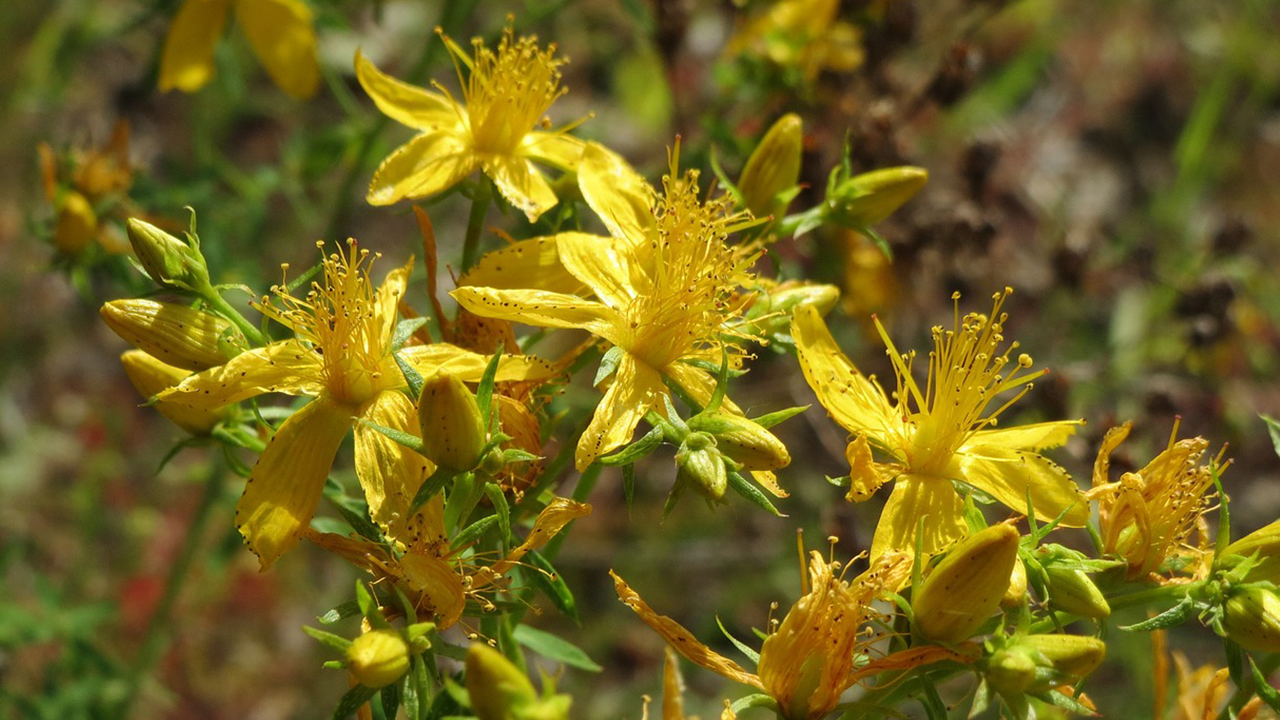
21, June 2023
Summer Solstice Herbs & Flowers
The longest day has arrived, and many plants are in bountiful bloom right now. Plants and flowers are inextricably linked to the summer solstice: in ancient celebrations, healing herbs were believed to be at their most powerful and potent when harvested on this day. People would weave the blooms of certain plants into flower crowns and garlands, or cast them into symbolic bonfires. Here are some of the beautiful plants associated with this wonderful time of year.
St John’s Wort

Perhaps the plant most closely connected to the summer solstice, St John’s wort bears clusters of bright yellow, star-shaped flowers in midsummer. It grows in hedgerows and woodland in the UK.
The Celtic people saw St John’s wort (Hypericum perforatum) as a magical plant, believing it to bring prosperity, protection and peace and an abundant harvest. Its stems produce a red juice that was associated with blood, and it was often used to heal wounds and burns.
Gathering this plant on the solstice was thought to harness the energy of the sun at its strongest. As well as being thrown into solstice bonfires, it was hung over the doorways of houses and barns.
Today, St John’s wort supplements are believed by some to help with symptoms of mild depression.
Lady’s Bedstraw

This plant, also known as Galium verum, grows in meadows, on roadsides and in sand dunes throughout the UK. Its clusters of tiny, frothy flowers turn landscapes a zingy yellow – and fill the air with a sweet scent.
The name comes from the fact it was used to stuff mattresses in medieval times, because the aroma was thought to ward off insects. It was also thought to bring health to pregnant women when used to stuff their beds.
Lady’s bedstraw flowers were used to dye hair, clothes and even cheese. Once it dries, this herb has the scent of freshly-cut hay, evoking summer whatever the time of year.
In Romanian folklore, the flowers have long been associated with good fairies, called Sânziene. On the eve of the Sânziene festival, still celebrated in Romania on 24th June, young women tuck wreaths of lady’s bedstraw under their pillows, because the plant is associated with luck in love.
Lady’s bedstraw is considered by many to be a weed, because it grows easily and voraciously, but it is an important food source for pollinators including bees, butterflies and their caterpillars.
Lavender

Lovely, legendary lavender! We can’t get enough of the calming aroma of this herb – and people have been loving it for the same reason for many years. But beyond the relaxing scent, this plant was believed to heal and protect in ancient times.
On Midsummer’s Eve, people would mix lavender (lavandula) with other seasonal plants: mugwort, chamomile and rose, in the belief the aromatic blend would encourage the appearance of elves and fairies.
In Spain and Portugal, on St John’s Day (24th June), people threw handfuls of lavender into fires because it was thought to keep evil spirits away.
These days, you’re most likely to find this purple beauty growing in gardens in the UK. If you’re lucky enough to have a lavender plant growing in your outdoor space, consider drying out some of the flowers and making them into fragrant lavender bags. Just be sure to leave some behind for the brilliant bees.
Please note that in the UK it is illegal to uproot any plant without the landowner’s permission. Wild plants should never be picked for pleasure and some are protected by law.



